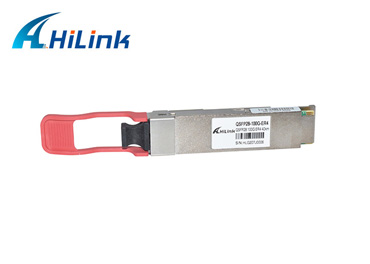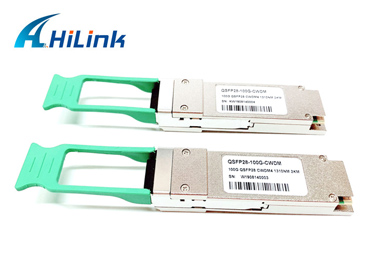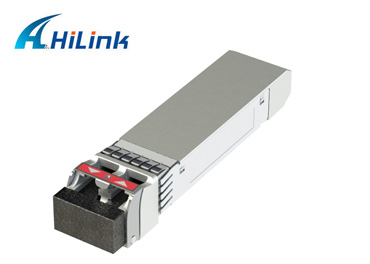Guide to QSFP28 to SFP28 Interconnect Solutions
Jun. 09, 2022
As the number of 100G QSFP28 devices connected to data centers increases and the need for high-speed data processing evolves, data centers need to gain the power to have faster and more efficient transmission rates. In recent years, 25G SFP28 and 100G QSFP28 technologies have gained increasing attention with their ability to provide efficient paths at high rates. So how do you choose a suitable solution to connect 100GBASE Ethernet and 25GBASE Ethernet? This article will introduce four QSFP28 to SFP28 connectivity solutions and tells how they differ in terms of how they work, their applications, and parameters.
What is QSFP28 Transceiver Technology?
The 100G QSFP28 form factor first appeared in 2013. After several years of development, the 100G QSFP28 optical module has spawned several categories, each with different optical module standards for different transmission applications. the QSFP28 form factor offers four different signal channels with increased transmission rates up to 100Gbps. the QSFP28 optical module is smaller than the CFP and CFP2. If you want to deploy a high-density, high-speed network, QSFP28 optical modules would be a good choice.
100G 40KM QSFP28 ER4
Four QSFP28 to SFP28 Interconnect Solutions
1. QSFP28 to SFP28 with MTP breakout connection
When connecting one 100G QSFP28 transceiver directly to four 25G SFP28 transceivers, an 8-fiber MTP to 4×LC harness cable will do the job. This solution is suitable for situations where the connected optics are arranged over short distances, such as in the same rack/cabinet. MTP breakout cables provide the transition from multi-fiber cables to single-fiber or duplex connectors. These cables are suitable for a wide range of applications for all network and device requirements, such as 100GB SFP modules. It provides a reliable, cost-effective, and efficient cabling system for migrating from legacy 25G to higher speed 100G Ethernet.
2. QSFP28 to SFP28 connection using 100G DAC breakout cable
100G QSFP28 DAC breakout cable, widely used to link devices within 5 meters of the rack. 100G QSFP28 to 4x 25G SFP28 breakout direct connect copper cable' connected to 100G port on one end and 4x 25G SFP28 port on the other end, it is an excellent alternative to 100G optical modules for a short distance (1-5 meters) 100G Ethernet connections. solution. If your 100GbE network is deployed in a 5m rack, the 100G QSFP28 to SFP28 DAC Passive High-Speed Cable is perfect for you. In terms of power consumption, DAC cables consume less power than AOC cables. Since passive DAC cables do not require a power supply, the power consumption is almost zero. Compared to a 2W active optical cable, the high-speed cable has an advantage in terms of power consumption.
100G QSFP28 CWDM4 2KM
3. QSFP28 to SFP28 connection using AOC breakout cable
100G QSFP28 active optical cable includes 100G QSFP28 to 4x 25G SFP28 AOC, 100G QSFP28 to 4x 25G SFP28 split active optical cable with one end connected to 100G port, and one end connected to 4x 25G SFP28 port, this cable length is 1-70M, QSFP28 to 4x 25G SFP28 The maximum transmission distance of AOC with OM3 cable is 70M; the maximum transmission distance with OM4 cable is 100M. It is mainly used for interconnecting servers, storage devices, switches, and other devices. By the way, the cost of using AOC will be higher than that of DAC. In addition to price, AOC cables are lighter and thinner than DAC cables, with a smaller minimum bend radius, which facilitates the management of cabling systems.
4. QSFP28-SFP28 Adapter Module
The QSFP28 Adapter (QSA) module, provides 25 Gigabit Ethernet for 100G QSFP28 dedicated platforms. It provides an option to use a lower speed SFP28 module by providing a smooth and economical migration to 100 Gigabit Ethernet on an empty QSFP28 port or when the other end of the network is running at a slower speed. the QSA module converts a QSFP28 port to an SFP28 port. With this adapter, customers can use any SFP28 module or cable to the QSA module to convert a QSFP28 port into an SFP28. With this adapter, customers can use any SFP28 module or cable to connect to a lower-speed port on the other end of the network. The adapter supports all SFP28 optics and cables.
25GB SFP28 DWDM 20KM Transceiver
Conclusion
This post introduced four QSFP28 to SFP28 interconnect solutions. MTP breakout cable solution is used to directly connect one 100G QSFP28 transceiver with four 25G SFP28 transceivers, 100G QSFP28 to 4x25G SFP28 DAC breakout cable solution supports distance up to 5 meters within racks, and 100G QSFP28 to 4x25G SFP28 AOC breakout cable solution is used for 1 to 70 meters the distance between the switches to transmit 100G Ethernet data, the last 100G QSFP28 to SFP28 converter module is to use an adapter with SFP28 module or cable to connect to a lower-speed port on the other end of the network.
When choosing an appropriate interconnect solution, we need to consider a combination of cost, the distance between device ends, device port density, and acceptable power consumption. For example, if cost is your first consideration and the distance between device ends is within 5 meters, then a 100G QSFP28 to 4x25G SFP28 DAC breakout solution may be your first choice. Hilink offers a variety of 100G transceivers that enable economically, high-density, and low-power 100G Ethernet connectivity for data center, distribution layer, and service provider applications solutions.















